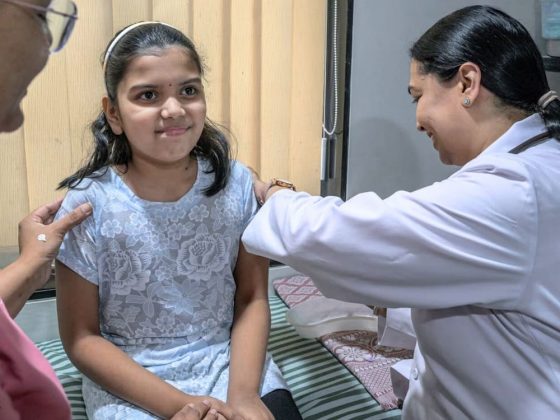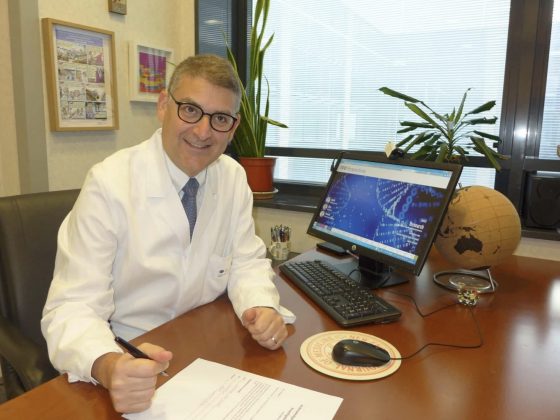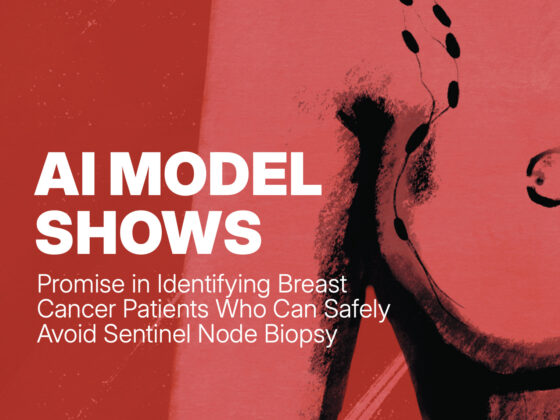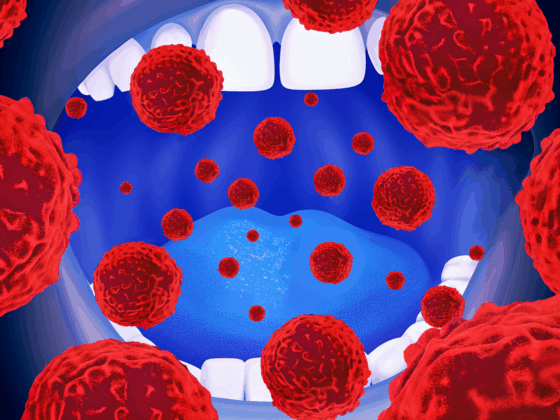England’s HPV vaccination programme is helping to close inequalities in cervical cancer, cutting incidence rates across the socioeconomic spectrum. The study, published in the BMJ, found that the vaccination programme was associated with a substantially reduced incidence of cervical cancer and grade 3 cervical intraepithelial neoplasia across every level of socioeconomic deprivation.
“Historically, cervical cancer has had greater health inequalities than almost any other cancers and there was concern that HPV vaccination may not reach those at greatest risk. Instead, this study captures the huge success of the school-based vaccination programme in helping to close these gaps and reach people from even the most deprived communities,” says Peter Sasieni, the lead author from Queen Mary University of London. In the UK, he adds, with continued action to improve access to vaccination and screening for all, elimination of cervical cancer as a public health problem is ”possible in our lifetime”.
While more than 100 countries worldwide have introduced prophylactic HPV as part of routine immunisation schedules, one important outcome yet to be reported is the effect of vaccination on cervical disease inequalities. Women from more deprived socioeconomic backgrounds are known to share a disproportionately greater burden of cervical cancer incidence and mortality.
In England the national HPV vaccination programme, which started in 2008, offers vaccination to all 12- to 13-year-old girls, with catch-up campaigns targeting older teenagers aged <19 years. In 2019, the programme was extended to 12- to 13-year-old boys, with those eligible but not vaccinated able to receive vaccination free of charge from their GP until age 25. A study of the English programme, published in The Lancet in 2019 by Sasieni and colleagues, found that the estimated relative reductions in cervical cancer rates were 34% for women vaccinated at age 16 to 18 years, 62% for those vaccinated aged 14 to 16, and 87% for those vaccinated aged 12 to 13, compared with the reference unvaccinated cohort. For grade 3 cervical intraepithelial neoplasia (CIN3, high-grade abnormal cells), the relative reduction was 39% for those vaccinated at age 16 to 18, 75% for those vaccinated at age 16 to 18, and 97% for those vaccinated aged 12 to 13 years. The authors estimated that, by June 30 2019, the programme had resulted in 448 fewer cases of cervical cancer and 17,235 fewer cases of CIN3 in vaccinated cohorts compared with reference unvaccinated cohorts. The current study includes an additional 12 months of follow-up and analyses the effectiveness of vaccination across different levels of socioeconomic deprivation. “Concern has been expressed that if the uptake of HPV vaccination is lower in those at greatest risk of cervical cancer, as has been seen in the US, this could accentuate health inequalities,” write the authors.
For the study, the investigators retrieved records from a database managed by NHS England’s National Disease Registration Service of all women aged 20 to 64 years living in England who were diagnosed with invasive cervical cancer or CIN3 between January 2006 and June 2020. The records were divided into seven cohorts of women, including three cohorts who had been vaccinated at ages 12 to 13, 14 to 16, and 16 to 18, respectively (accounting for differences in the school year when vaccinated), and four older cohorts not eligible for vaccination.
Overall, the team identified 29,968 women diagnosed with invasive cervical cancer and 335,228 diagnosed with CIN3. For women offered vaccination routinely aged 12 to 13, the adjusted age-standardised incidence rates of cervical cancer and CIN3 were 83.9% and 94.3% lower, respectively, than in the reference cohort of women never offered HPV vaccination. By mid-2020, the authors estimate that HPV vaccination had prevented an estimated 687 cervical cancers and 23,192 cases of CIN3.
To evaluate the effect of deprivation, the investigators used the standard statistical geographical unit for dividing England into small areas of similar sized populations (approximately 1,500 residents or 650 households). The local areas were divided by socioeconomic factors into five equal groups, ranging from the most to least deprived.
Results showed that the proportion of cervical cancers prevented in each cohort was similar between the most deprived cohort and the least deprived. For those offered vaccination at age 16 to 18, 29.4% of cervical cancers were prevented in the most deprived group vs 25.6% in the least deprived group. For those offered vaccination at age 14 to 16, 68.3% of cervical cancers were prevented in the most deprived group vs 66.8% in the least deprived group. For those offered the vaccine at age 12 to 13, 84.6% of cervical cancers were prevented in the most deprived group vs 83.5% in the least deprived group.
For CIN3, differences by socioeconomic level varied according to age of vaccination. For women offered vaccination at age 16 to 18 years, the proportion of CIN3 prevented was substantially lower for those from the most deprived compared with the least deprived areas – 29.6% vs 40.6%. This difference was greatly reduced for those offered vaccination aged 14 to 16 (67.7% vs 72.8%), and aged 12 to 13 (95.3% vs 96.1%).
The greater health inequality in CIN3 observed among women aged 16 to 18, suggest the authors, may result from women in the most deprived fifth being less likely to be in school, and therefore missing out on the vaccination programmes. “The English HPV vaccination programme was associated with substantially lower rates of cervical cancer and CIN3 in all fifths of socioeconomic deprivation, although the highest rates remained among women in the most deprived areas,” conclude the authors. “This shows that well planned and executed public health interventions can both improve health and reduce health inequalities.”
Further investigations, they add, should be carried out in future to check for any effect on cancer incidence caused by the Covid-19 pandemic, gender neutral vaccination, a change in the type of vaccine used, and/ or reduced dose schedules.
In an accompanying editorial, Trisha Amboree (University of Texas MD Anderson Cancer Center, Houston), Joslyn Paguio (The Cervivor Advocacy Group, California), and Kalyani Sonawane (MUSC Hollings Cancer Center, Charleston, South Carolina), write, “Interestingly, vaccine effectiveness (the proportion of cervical cancers averted) was consistent regardless of socioeconomic status. This finding suggest that marginalised groups may benefit from the HPV vaccine despite poor social determinants of health or higher prevalence of risk factors such as smoking, alcohol consumption, and reduced uptake of cancer screening.”
To successfully eliminate cervical cancers, they add, policy makers must develop, implement, or redesign programmes to ensure equal access to the HPV vaccine for all individuals, regardless of income. “To overcome the challenges of reaching target coverage and to maximise population herd immunity, collective efforts of government, community stakeholders, and healthcare professionals in these countries will be necessary,” they write.












